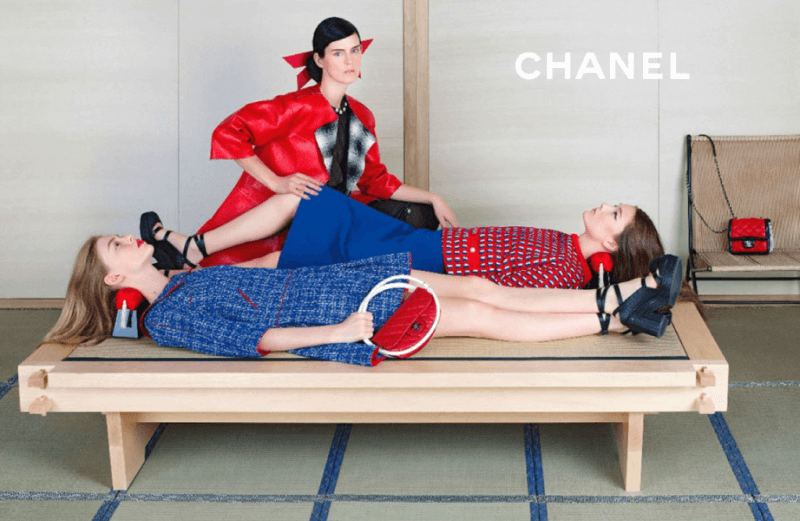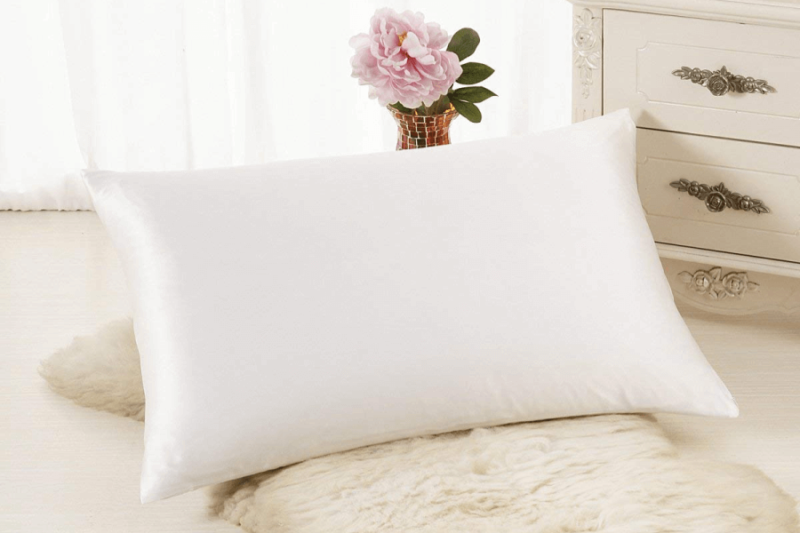Jump to:
- What Is the History of the Takamakura?
- How Does the Takamakura Work?
- What Does the Takamakura Look Like?
- Do People Still Use the Takamakura Today?
- Takamakura Alternatives: What Can Be Used Instead?
The takamakura (高枕) is a Japanese pillow with a long and storied past. It’s known for its peculiar design, as well as its connection to geisha (芸者) culture.
This unusual pillow can be used for rest and sleep, but we wouldn’t recommend long term use. Looking for comfort? Try an orthopedic pillow for therapeutic relief or even a dream pillow to aid in sleep onset, instead. The takamakura has only one purpose: to preserve elaborate coiffures.
What Is the History of the Takamakura?
The takamakura’s significance lies in its history. It’s not about pointing out the uniqueness of the pillow design. What is truly essential is understanding its specific use.
Takamakura Vs. Makura Kōro: Similar but Different
Like the takamakura, the incense pillow or makura kōro (枕香炉) is an unusual item with roots in Japanese history.
Why are we including this in the history of the takamakura? It’s because parallels in design elements can result in confusion. In fact, misclassification of vintage pieces is not uncommon!
To the average person the takamakura and the makura kōro may be difficult to tell apart. When in doubt, it’s best to fall back on how the two different pillows are meant to be used.
The makura kōro is a combination incense burner and headrest dating back to the 10th century. The idea behind the incense pillow was for users to lie down and have the fragrance pass through and and impart a scent to their coiffures.
To really understand the difference, let’s take take a look at a major part of the takamakura’s history: its role in geisha culture.

Geisha and the Takamakura: Preserving Hairstyles
Have you ever wondered how long it takes to craft a hairstyle? The ordeal can stretch on for hours or even a whole day, especially if the coiffure is very complicated. Few are as qualified to attest to this than the geisha.
What most people think as the signature geisha updo is a complicated 17th century chignon-like style called the shimada (島田). Popular geisha looks actually changed dramatically through the centuries! One thing all these hairstyles had in common, though, was how hard they were to maintain.
Today, most modern geisha wear painstakingly maintained wigs that are easier to manage. However, their apprentices—called maiko (舞妓)—often have their real hair coiffed. Some even have it done the traditional way: pressed, set, teased, tied, and waxed into place by a professional once a week.
We know that you’re thinking: Once a week? Yes. Geisha have ingrained practices that help preserve the shape of their hairstyle. This is where using the takamakura comes in, as we will explain in detail below.
By the way: Samurai may have also slept on takamakura to preserve their topknots, also called the chonmage (丁髷). This is not as prominently documented as geisha use, though.

How Does the Takamakura Work?
The literal translation of the Japanese word takamakura is “high pillow”. The term bachimakura (罰枕)—literally “punishment pillow”—is sometimes used interchangeably with takamakura, too.
And though the takamakura has long fallen out of common usage, the term endures in the popular Japanese phrase: taka-makura de neru. Loosely translated, it means “to sleep in peace” or “to sleep without worrying”.
The translations above should provide insight to how the Japanese pillow is used. To ensure that a coiffure lasts longer—or at least until the sleeper’s next hair appointment—the takamakura is used as a neck cradle.
In the book Memoirs of a Geisha, Arthur Golden describes the takamakura in this passage: “It’s not so much a pillow as a cradle for the base of the neck. Most are padded with a bag of wheat chaff, but still they’re not much better than putting your neck on a stone.” The 2005 film based on the book also includes a scene that shows the main character, Chiyo, using a takamakura.

What Does the Takamakura Look Like?
This is not so easy to answer, which is why it’s usually described by stating its purpose. There are many different kinds of takamakura, in terms of both design and materials used. The height of the takamakura can range from three to seven inches (or seven to 18 cm).
The most ordinary and widely known version features a lacquered wooden base. It can come with a sobagara (蕎麦殻) or buckwheat hull-filled cushion attached to offer extended support and cooling.
The cushion’s cotton or silk fabric case can be plain or velveteen. Often a cotton or linen piece of cloth is laid on top of it, to protect the cushion from being soiled by hair wax and perspiration.
A common variant utilizes a solid base with curved bottom edges. This allows for a slight rocking motion that is more forgiving of small head movements.

The other types of takamakura are either more stark and much less adorned, or verging on luxury. It bears repeating that these pillow substitutes were not meant to be comfortable. Luxury here is more about the material and less about the usage.
On the simpler side, there are takamakura that are little more than wooden surfaces supported by legs. They actually look like miniature benches!
On the more extravagant side, there are lacquered takamakura with intricately painted or inlaid flourishes underneath. Some of these designs involved the maki-e (蒔絵) technique, which makes use of metal powders—including gold and silver—for decoration.
Apart from wood, takamakura were also made of more delicate material. For example: Japanese porcelain decorated in the blue and white pottery style revolutionized by the Chinese. Fragile and heavy, these takamakura were nevertheless in demand. Some porcelain takamakura are relatively new, crafted in the post-World War II era.

Do People Still Use the Takamakura Today?
While the takamakura has now been relegated to a mostly historical role, its influence still shows—in Japan and elsewhere in the world.
Since the 20th century, the geisha aesthetic has become more well-known globally. This is due in part to popular media, and to more accessibility to Japan and its culture after World War II.
As such, the takamakura has come along for the ride; the image below is an example. The takamakura appears as a prop in a Chanel ad campaign from 2013.
To answer the question: It may very well be still in use today by modern maiko, as we have noted earlier; but it is definitely not commonplace anymore.

Takamakura Alternatives: What Can Be Used Instead?
Using a traditional takamakura is hardly advisable these days. Not only is it a possible health hazard, but it is not compatible with the typical modern bedroom and mattress setup.
Want to preserve your complicated hairstyle? Looking for a pillow with cooling and supportive properties? Consider modern products that offer the same benefits as the takamakura. Below are some alternatives you may want to check out.
U-Shaped Cervical Support Pillows
Known primarily as orthopedic pillows for neck pain, these can also prevent hair breakage, damage and flattening.
Some variants are even covered in satin or silk—more on those below—or marketed as a hair product. Sizes vary, so make sure you get one that fits your neck right. Also: U-shaped cervical support pillows work best for back sleepers.

Check out our favorites:
- Satin Style Saver Pillow With Neck Cut-out ($30.99 on Amazon)
- USUNO Cervical Neck and Shoulder Relaxation Pillow ($15.88 on Amazon)
- EasyComforts Cervical Support Pillow ($13.99 on Amazon)
Cylindrical Neck Bolsters
Again, these are usually thought of as for therapeutic use, but they do the same job as other cervical support pillows.
Need a little bit more clearance between your head and your sleeping surface? These pillows might do the job, and then some! Most cylindrical bolsters are also good for knee support, can be used by side sleepers, and are small enough to be travel pillows.

Check out our favorites:
- Ka Ua Neck Roll Pillow Cervical Bolster ($34.99 on Amazon)
- NapYou Neck & Cervical Bolster Pillow ($24.99 on Amazon)
- OPTP Original McKenzie Cervical Roll ($22.95 on Amazon)
Buckwheat Hull Pillows
If support and cooling from is what you’re looking for, you can try buckwheat hull pillows. These are reminiscent of the cushions attached to takamakura, and can last for up to a decade.
These pillows absorb sweat, allow for more air circulation, conform to your sleeping position and dissipate heat. They come in different shapes and sizes, too—even cylindrical bolsters like we discussed above. We especially recommend ones that allow you to replace and control the amount of buckwheat hulls inside them.
Important: You can’t just throw entire buckwheat hull pillows in a washer or dryer. There is a specific way to maintain and clean them.

Check out our favorites:
- Comfy Neck Side Sleeper Buckwheat Hull Pillow, Medium ($83.00 on Amazon)
- PiloMio by Qbedding Adjustable Buckwheat Hull Pillow ($38.95 on Amazon)
- Infinite Nature Organic Buckwheat Pillow ($34.50 on Amazon)
Silk Pillowcases
Silk vs. satin: What’s the difference? Silk is more expensive, while satin is more affordable. Both are slippery, lowering hair and skin friction and helping reduce tangles, split ends and wrinkle formation. If you’re on a budget, you can opt for satin pillowcases.
Silk also cool to the touch, hypoallergenic, and resistant to dust mites, mold and mildew. It’s non-absorbent, too; so it won’t strip your hair of its natural oils throughout the night.
Pro tip: Don’t feel like splurging for a luxury item that you won’t use outside your bedroom? Try wrapping your hair in a silk scarf before you sleep.

Check out our favorites:
- Celestial Silk 100% Silk Pillowcase ($35.99 on Amazon)
- MYK 100% Pure Natural Mulberry Silk Pillowcase ($35.99 on Amazon)
- ALASKA BEAR Luxurious 25 Momme Silk Pillowcase ($35.90 on Amazon)